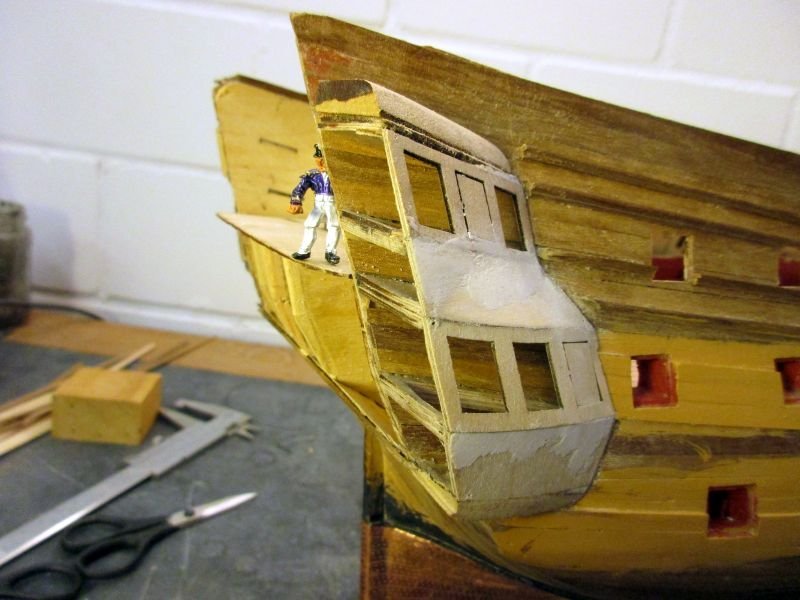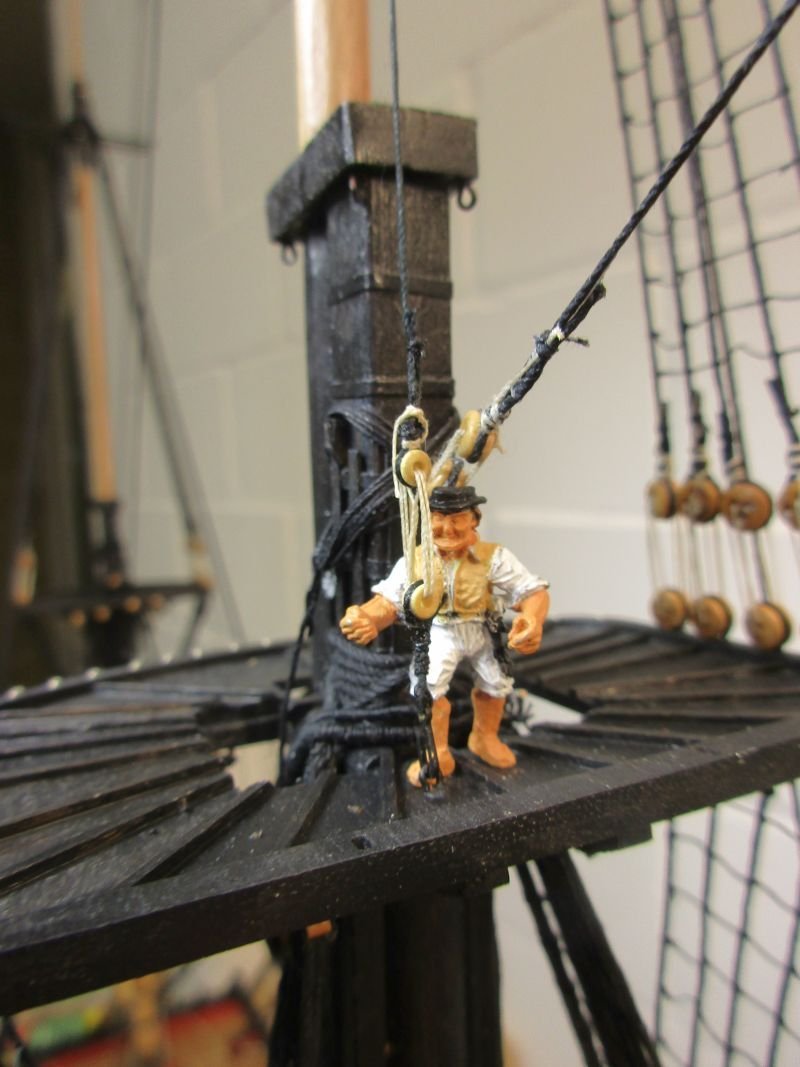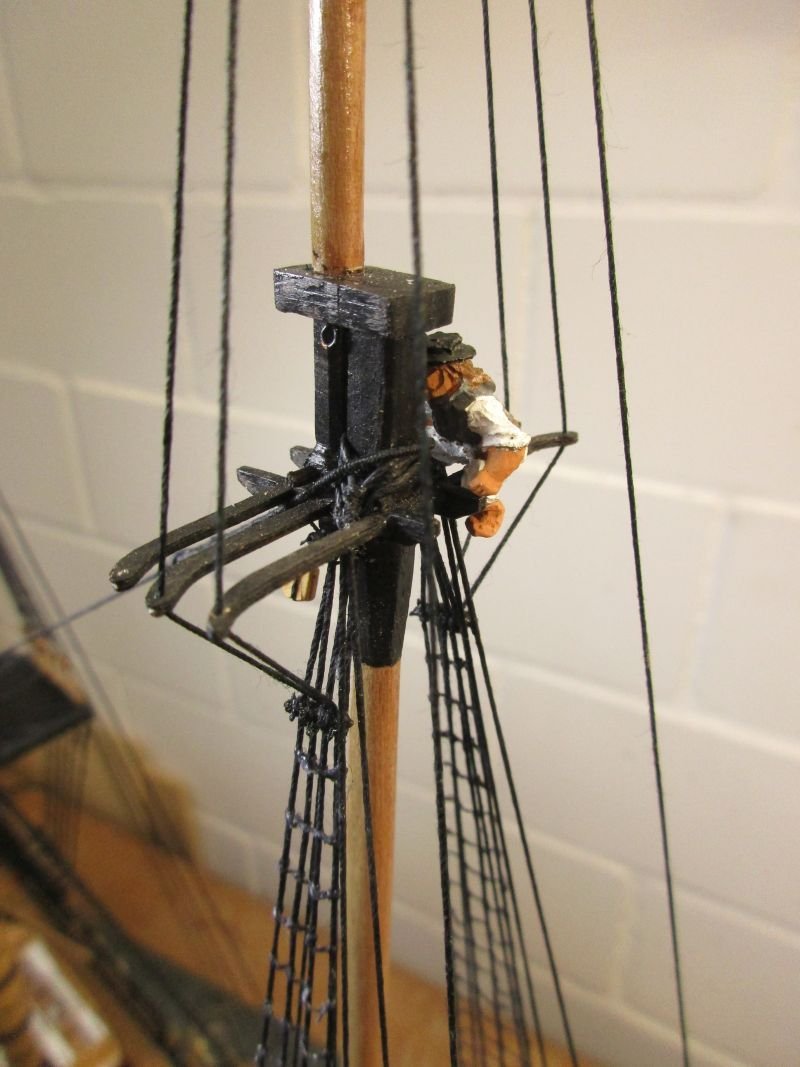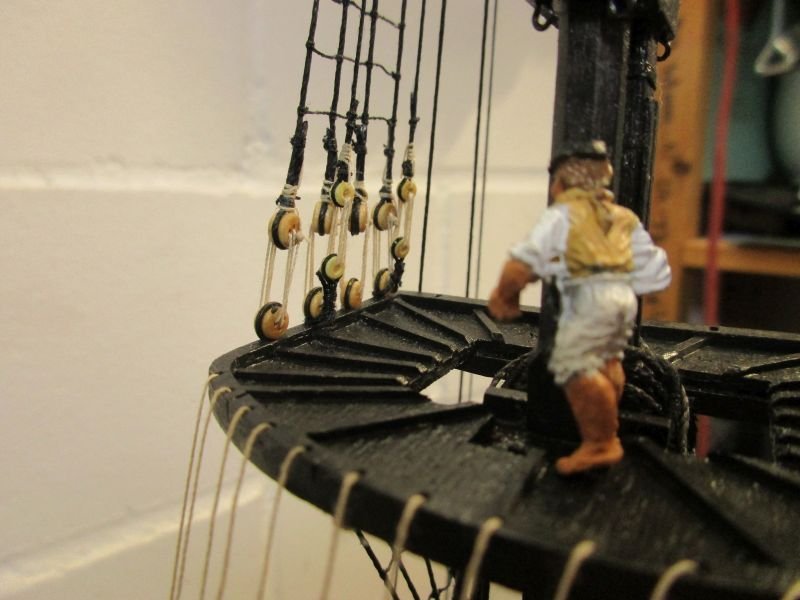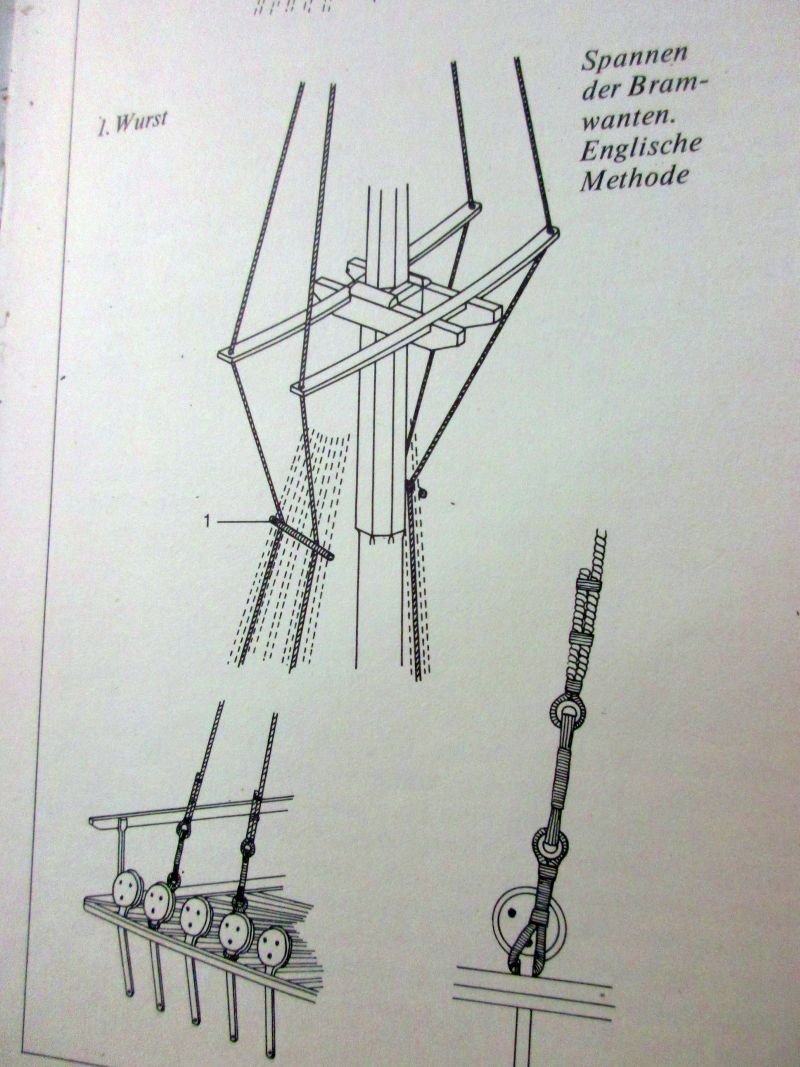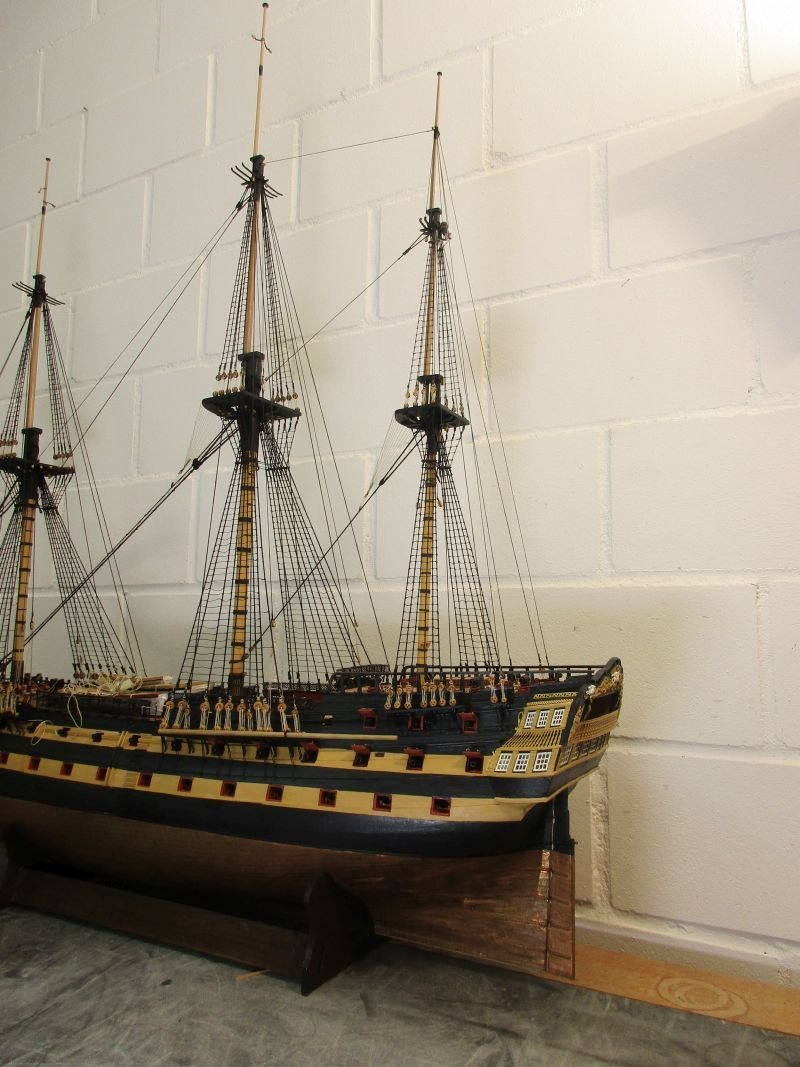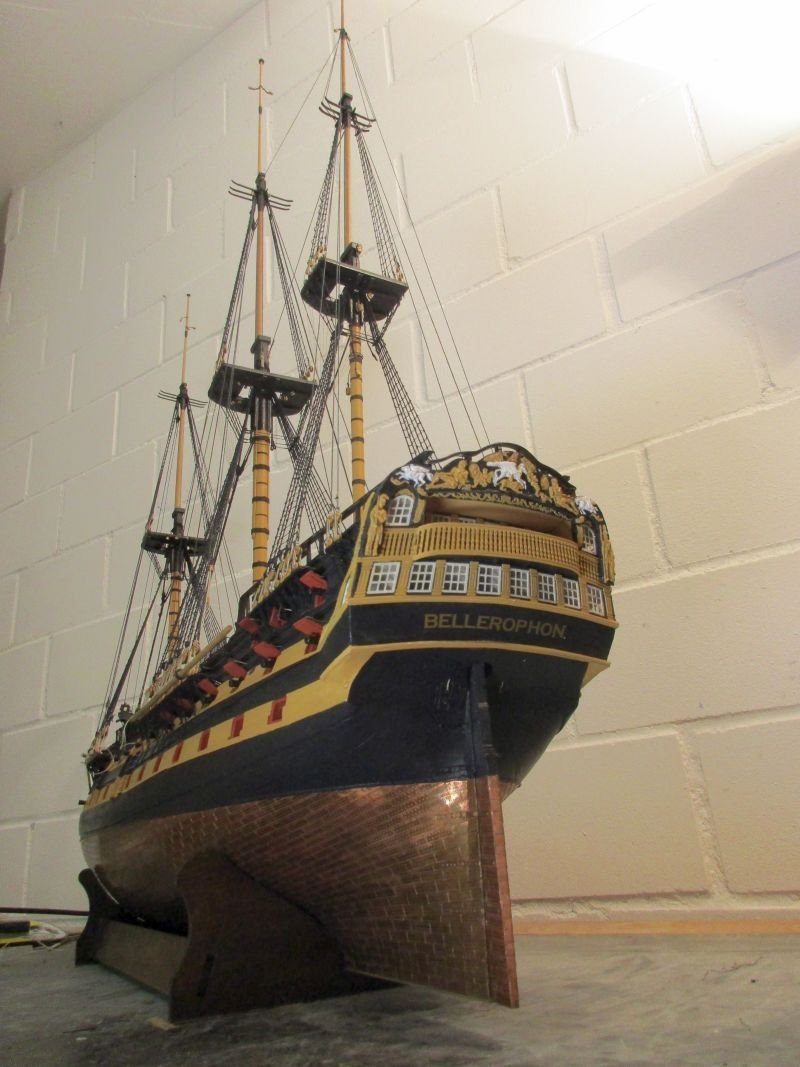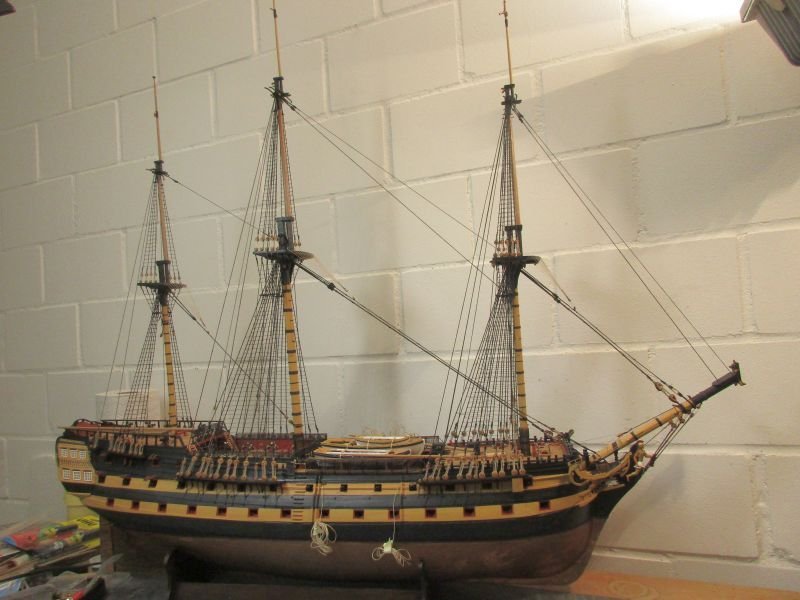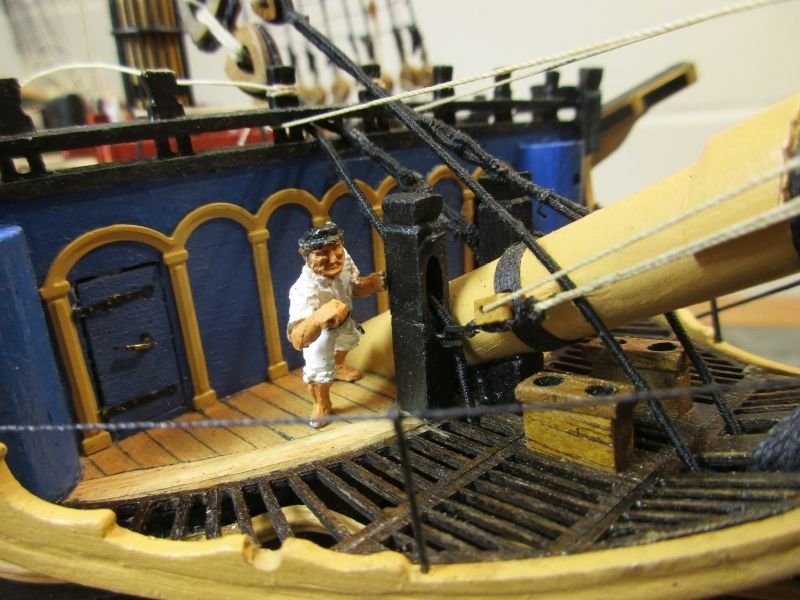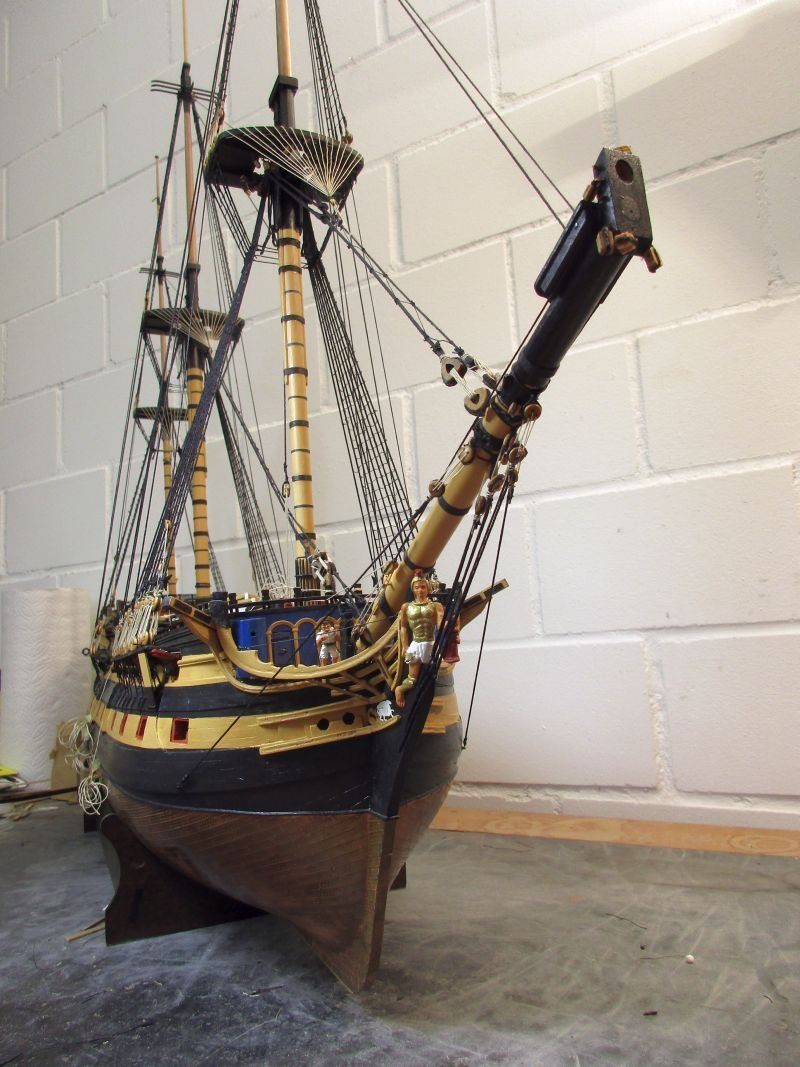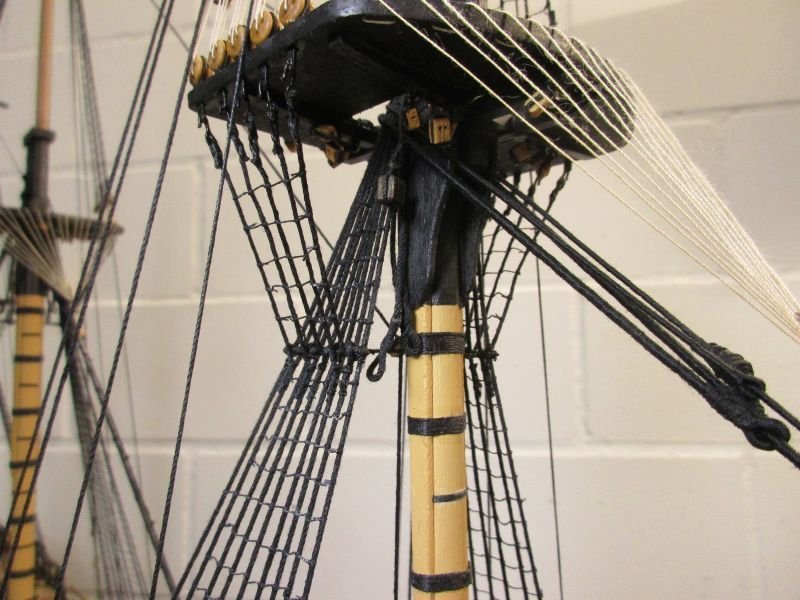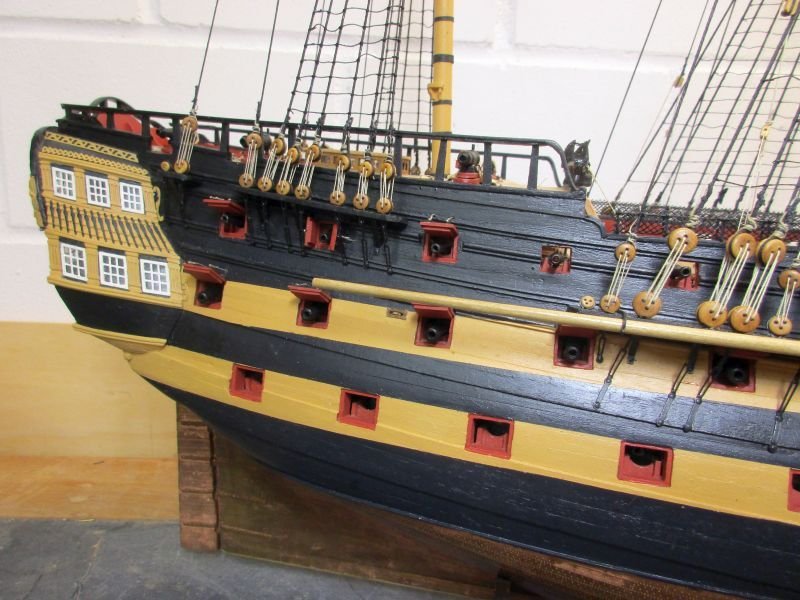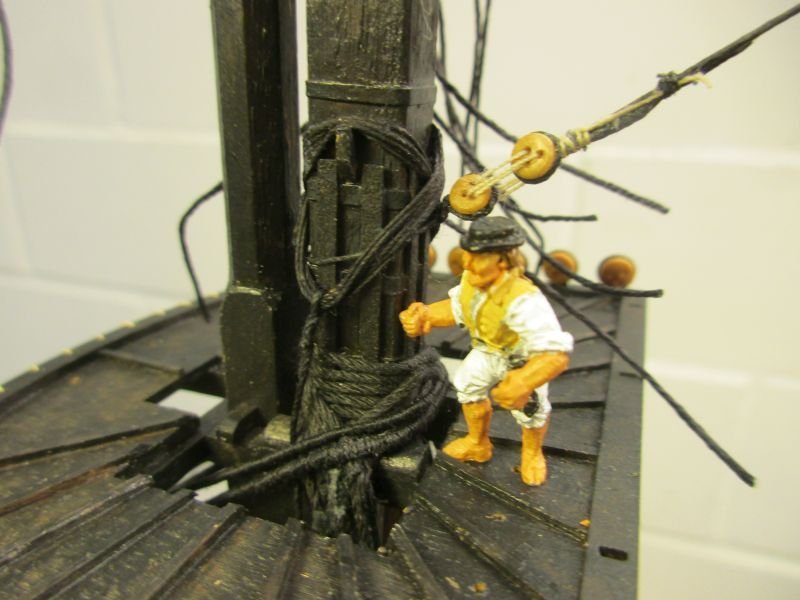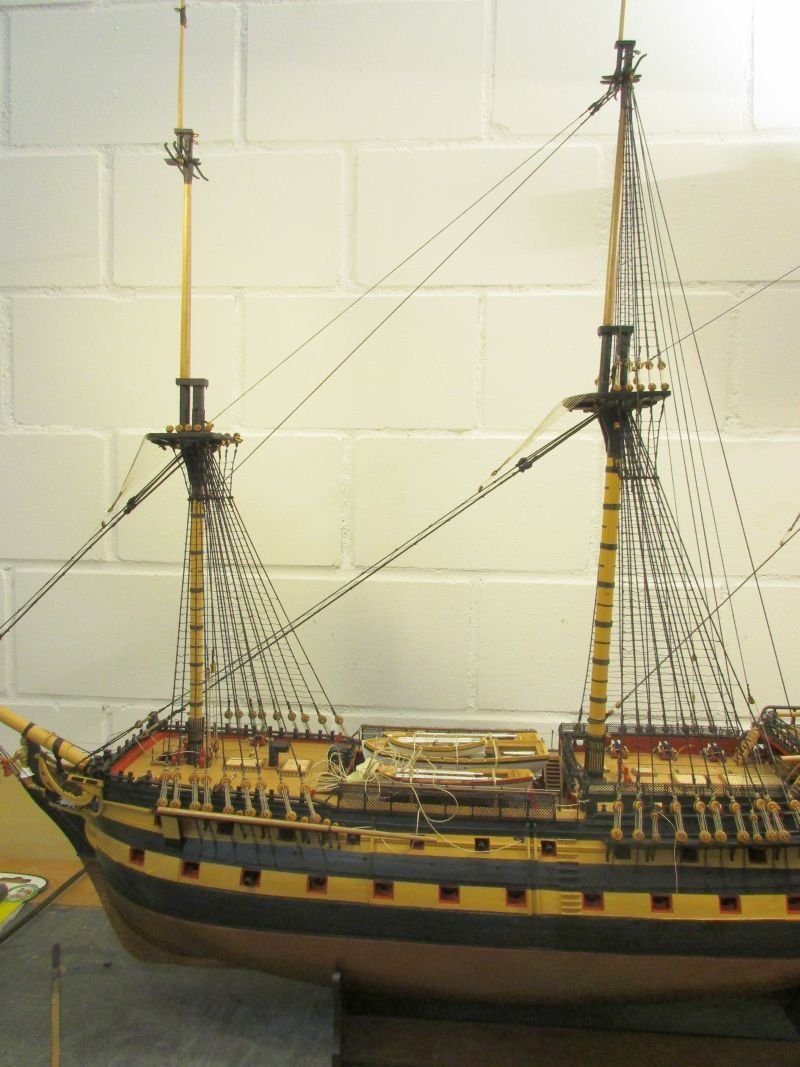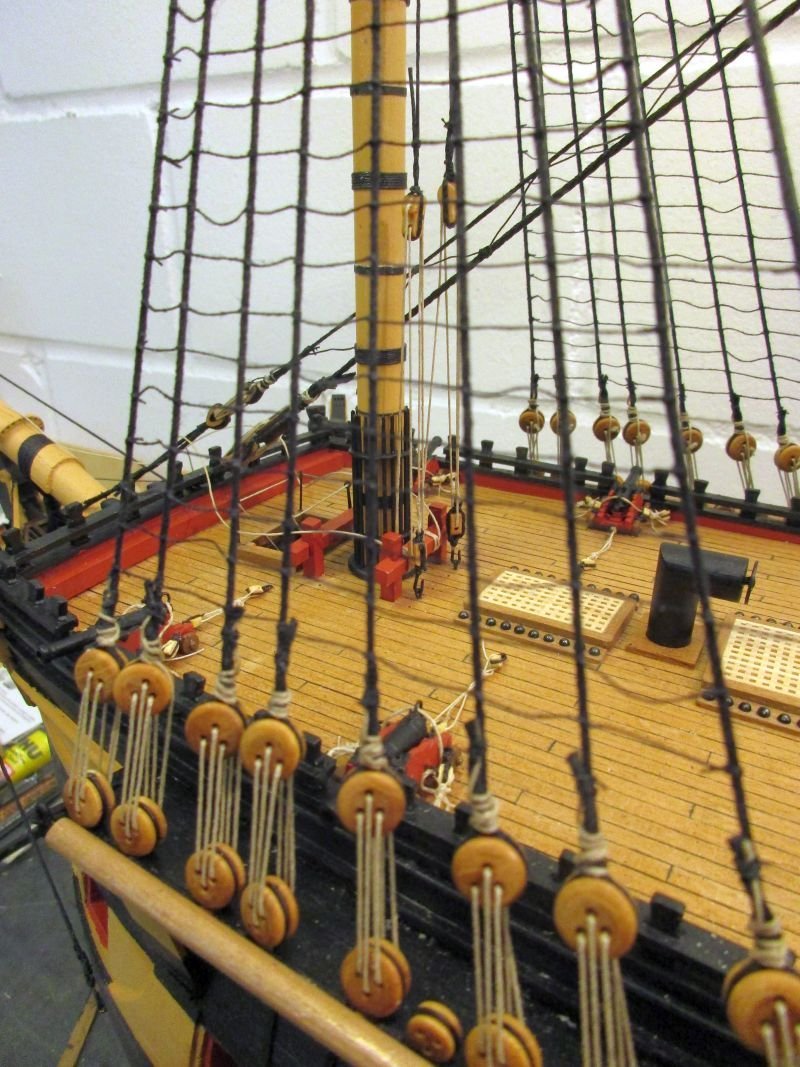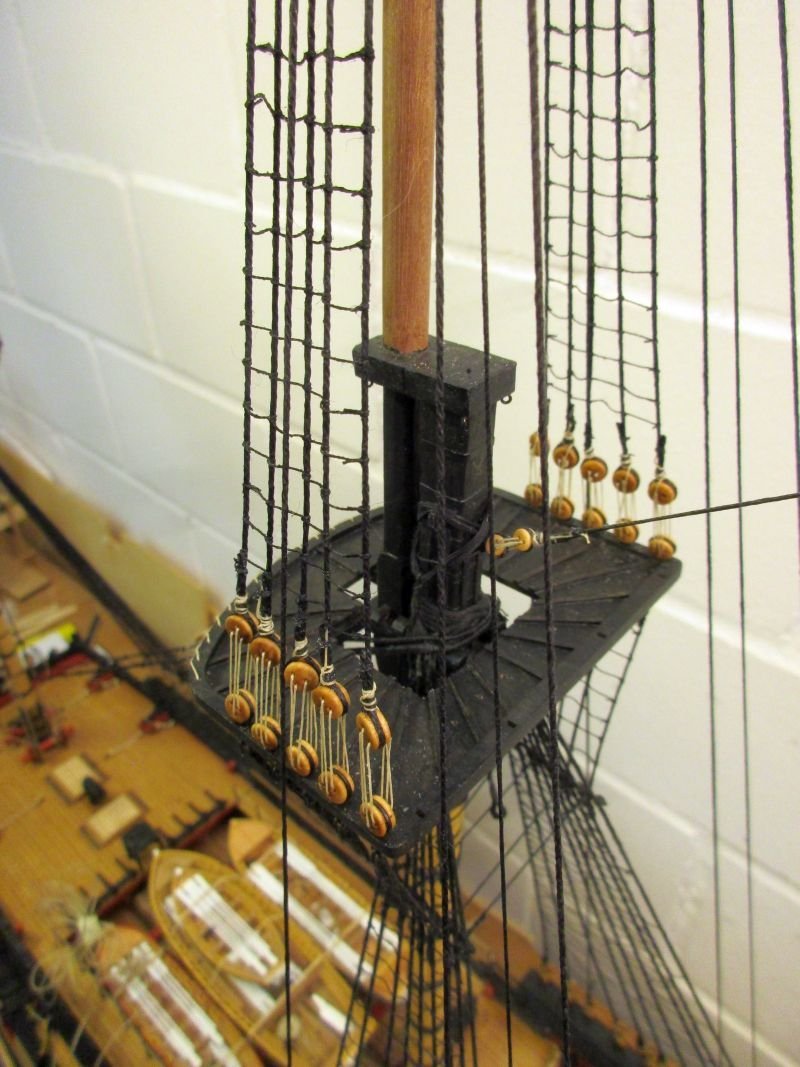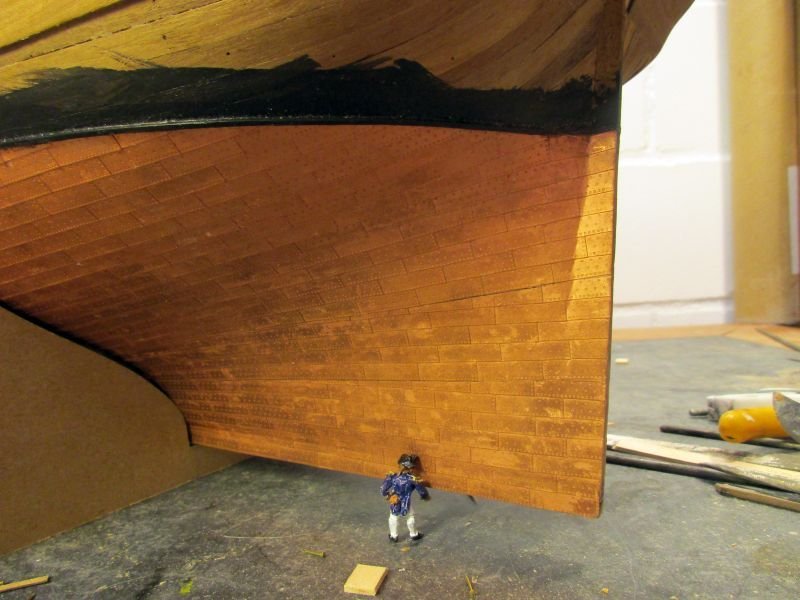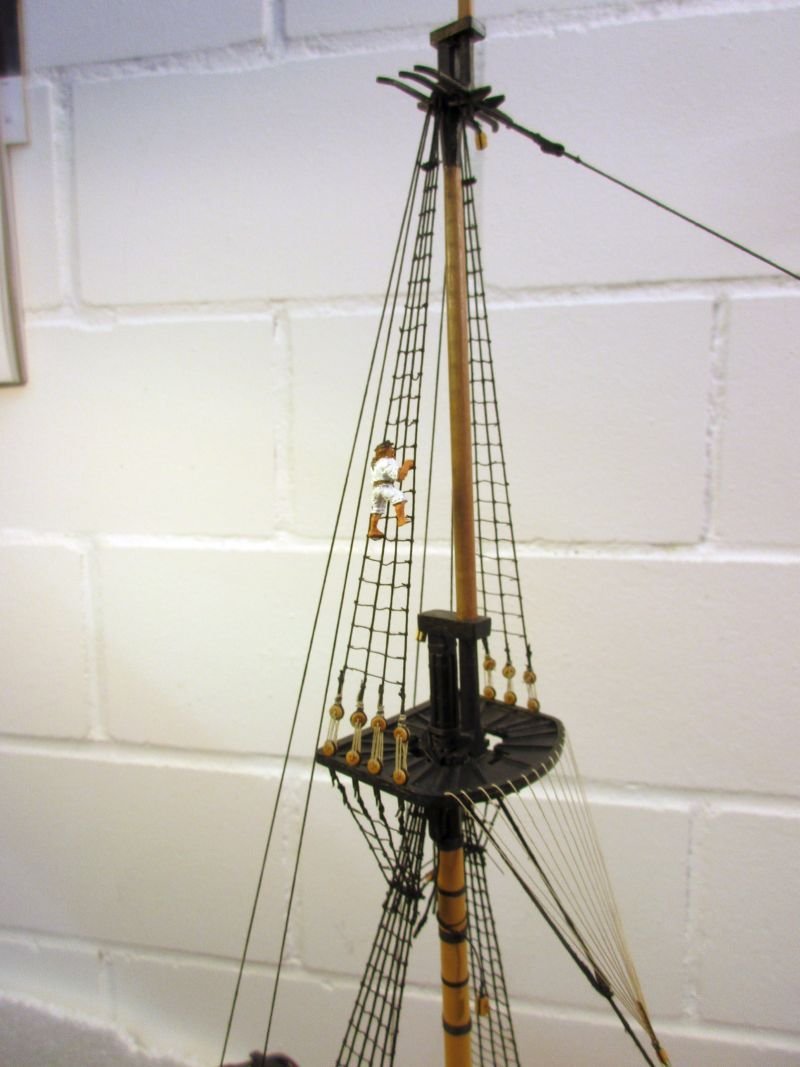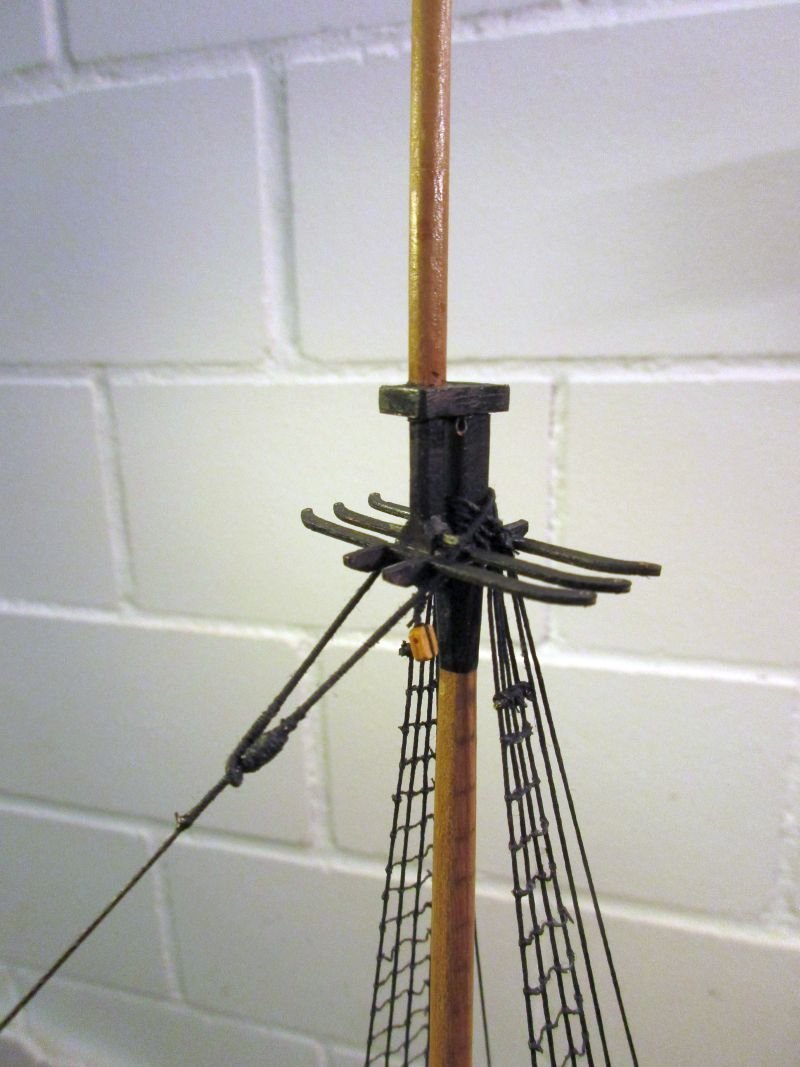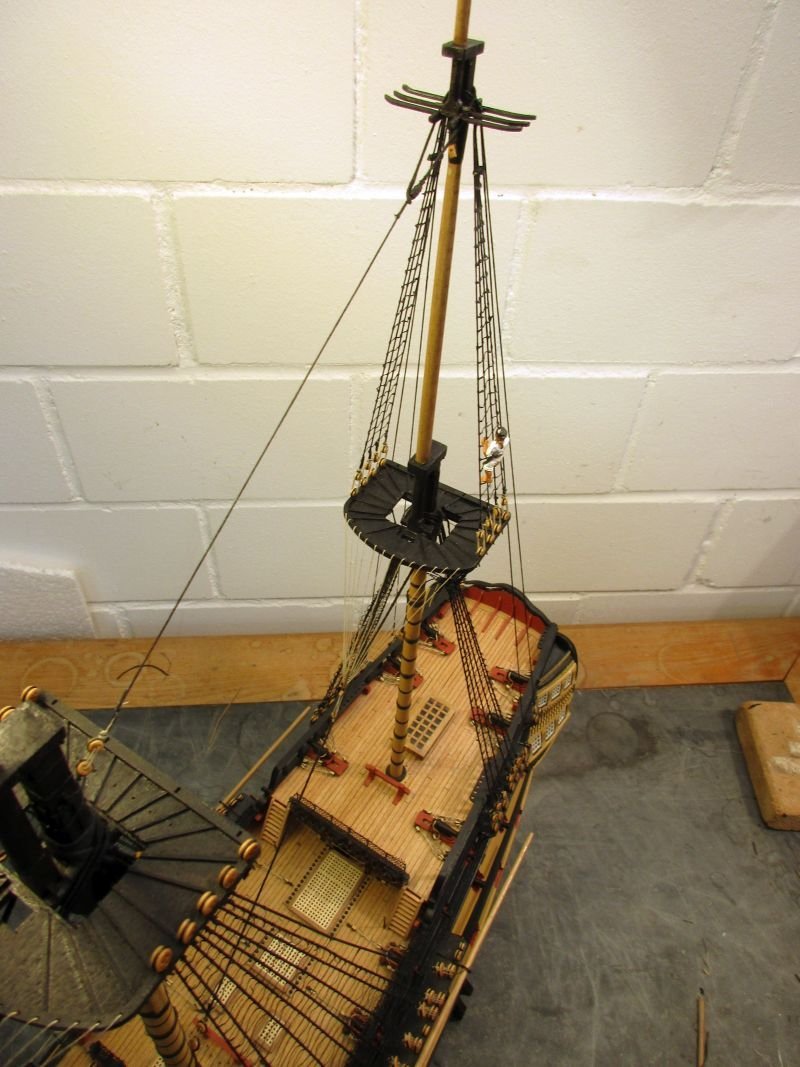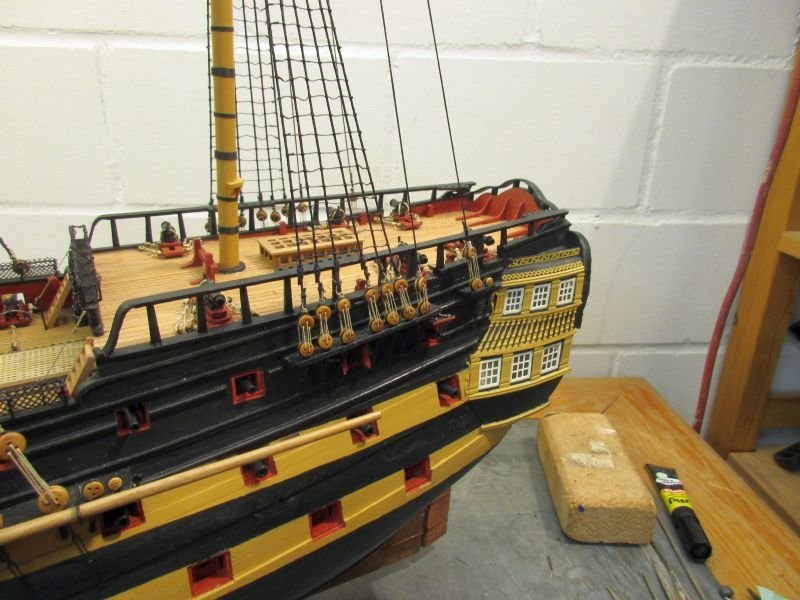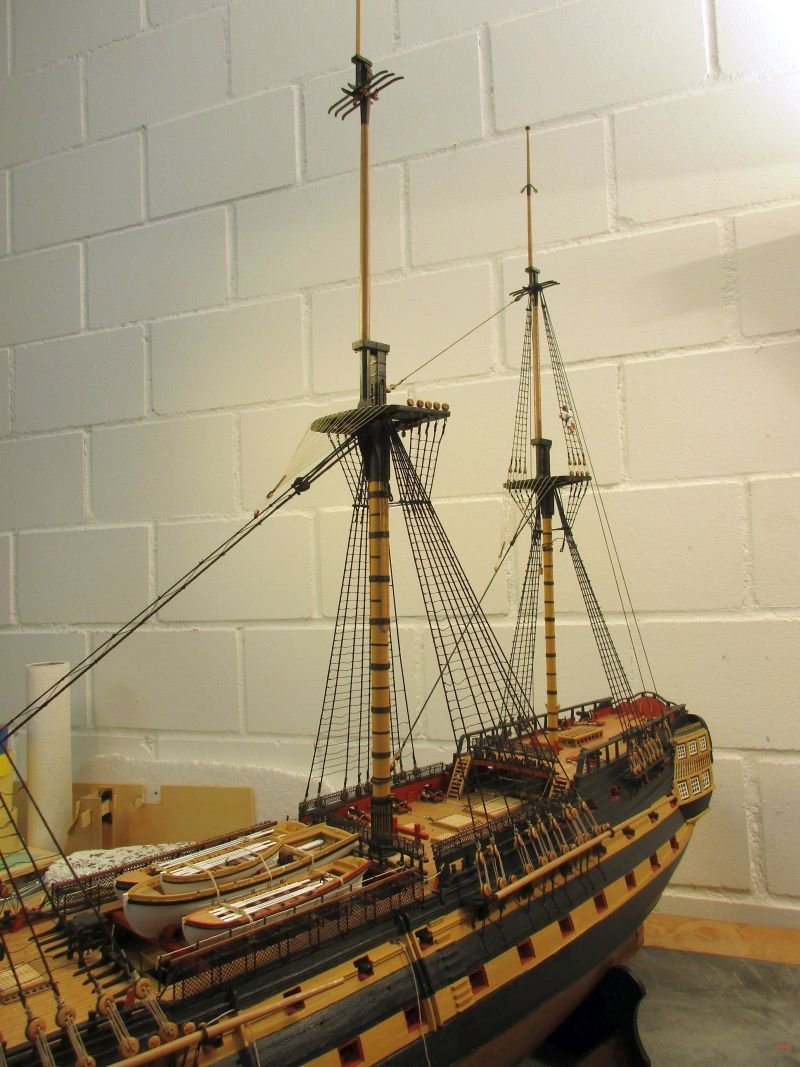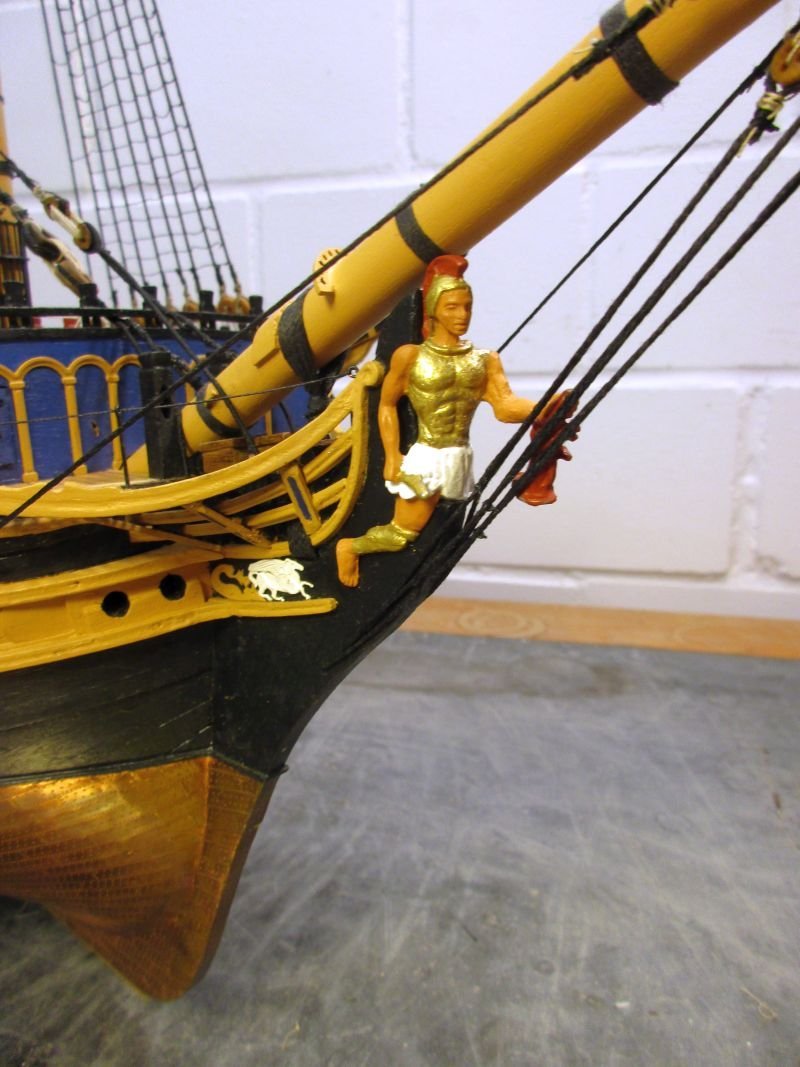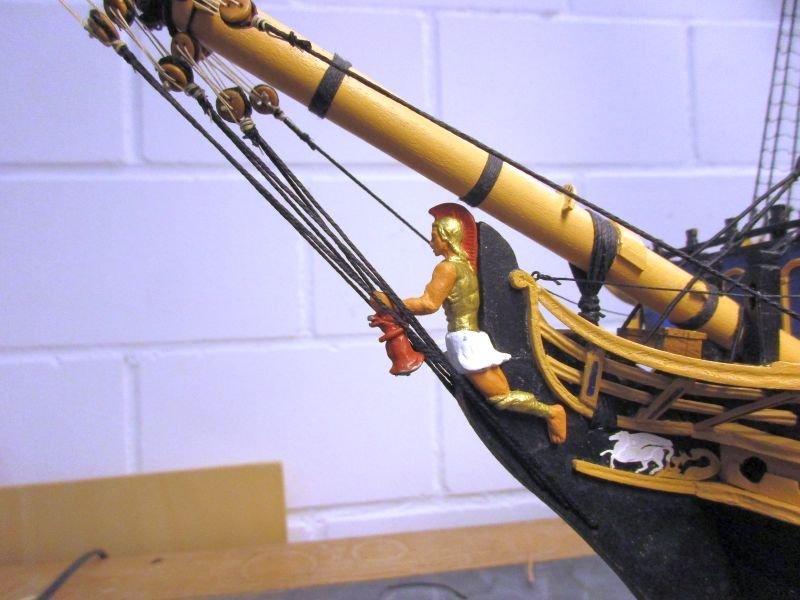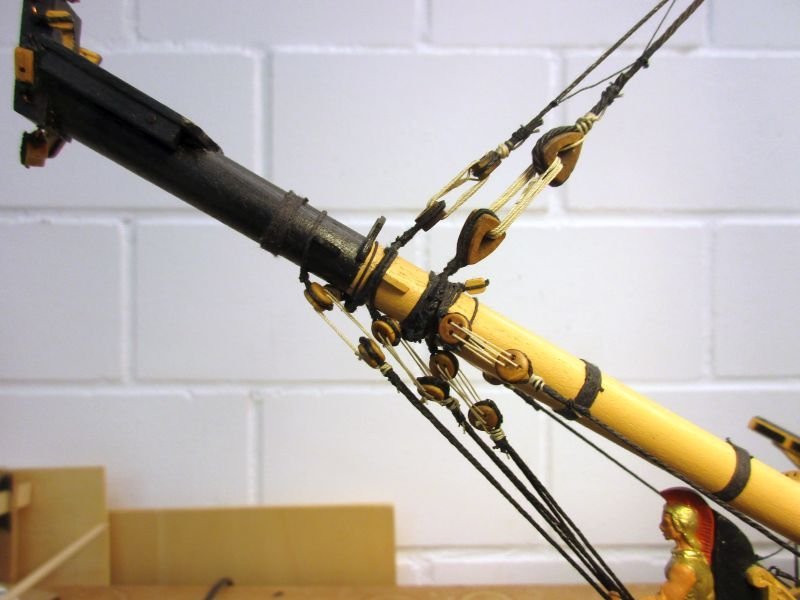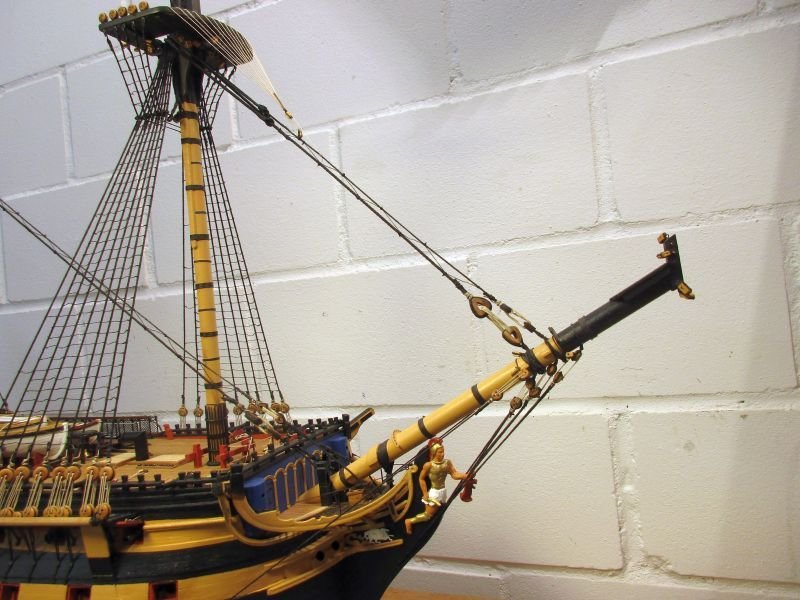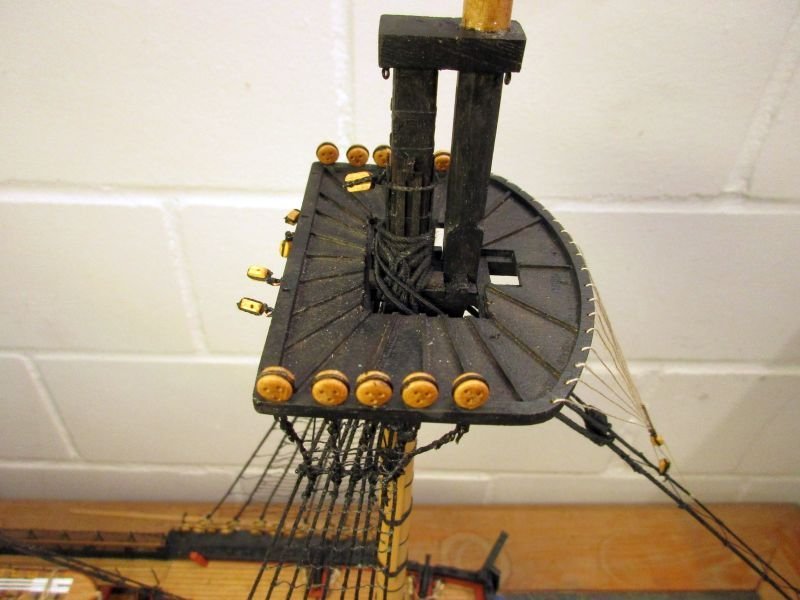-
Posts
1,004 -
Joined
-
Last visited
Content Type
Profiles
Forums
Gallery
Events
Everything posted by flyer
-
On the prototype the wales were just thicker planks used to build some parts of the hull - not a doubled up second layer. So the wales should run the same way and to the same ends as the neighbouring thinner planks. Peter
- 21 replies
-
- Amati
- Victory Models
-
(and 1 more)
Tagged with:
-
Perhaps they thought, that of course only enemy ships would eventually resemble the proverbial Swiss cheese. To be shot at, that's what enemy ships were there for after all. Own ships would never get harmed. Perhaps it started in the middle ages (Sovereign of the seas, Vasa) when kings wanted to intimidate their enemies with the sheer beauty and richness of their war machines to make them loose all confidence - not unlike the way the church in those times would try to impress poor countrymen with splendour and grandeur. (BTW - there is only one of the about 15 most common sorts of Swiss cheese which has those proverbial holes.) Peter
-
Your build is looking good. Those parts 27 and 28 are on the same 5mm sheet as the bulkheads 1 and 3. On my plan - Tavola 16 - they aren't numbered either. They are those 4 roughly triangle shaped items below parts 20. You definitely need them. Two on top of the galleries to give some headroom for the skipper when visiting his side gallery and below to round out the shape of the lower gallery. If I remember correctly the smaller 2 are numbers 27 and go on top - but you will see how they fit. Peter parts 27 and 28 installed and roughly shaped
- 21 replies
-
- Amati
- Victory Models
-
(and 1 more)
Tagged with:
-
Oh yes, that sailor! It already was suspected that he was a hobgoblin (which could be a Klabauterman in German, I think) and now he is suspected of taking steroids. Trying to clarify his ethnic background, I checked him: no green teeth nor red hair, so he most probably is no ship's cobold. Officially our figure lived in the early 19th century. Steroids weren't forbidden then - so no contravention there. Perhaps he was just unlucky when choosing his parents.
- 364 replies
-
- bellerophon
- victory models
-
(and 2 more)
Tagged with:
-
mizzen topgallant mast This was something I dreaded a bit. The crosstrees are quite flimsy, laser cut wooden parts, very much given to brake off. I did strengthen their joint with the trestletrees with epoxy after I broke the first but still didn't thrust them fully. In this scale etched metal crosstrees would perhaps be safer. Anyway I managed to rig the shrouds but puzzled about how to make fast the lower ends. The plan has them hitched around lower deadeyes of the topmast shrouds (after led around the futtock staves) but Lees says that they were made fast with a lashing to the deadeye, whatever that means. Finally I found an illustration in Zu Mondfeld's book where they are made fast to the lower deadeye with thimbles and a lanyard. That's what after some discussions between the skipper (me) and the bosun (also me) was used. Contrary to the kits plans backstays and stay were rigged with the same diameter thread (0,5mm) as the shrouds. This is according to Lees and steele's rigging tables. The backstays were rigged according to the plan. The stay however again asked for some thinking. On the plan it's lower end is just hooked into an eyebolt in the main top. After some searching I decided to use the same setup as for the shrouds. A little mistake must have happened somewhere while setting up my masts. The stay should lead horizontally to the block directly below the main topmast cap, from where it goes to the maintop. I found on my Bellerophon it ascends towards that block. Either the mizzen mast was served a bit short or the mainmast did grow. Mizzen topmast stay seems horizontal - unfortunately it isn't from 'Historische Schiffsmodelle: Das Handbuch für den Modellbauer' by Wolfram zu Mondfeld mizzen topmast top lower ends of topgallant shrouds in the mizzen top lower end of mizzen topgallant stay in main top
- 364 replies
-
- bellerophon
- victory models
-
(and 2 more)
Tagged with:
-
Hi B.E. Thanks. And yes, and I even managed to get a closer look at the creature in picture 5. Hobgoblin? Maybe we should ask Amati what kind of crew they are brokering. Peter
- 364 replies
-
- bellerophon
- victory models
-
(and 2 more)
Tagged with:
-
I followed that 'stop-discussion' with interest. For my Bellerophon I use Bellona as a source of information. That well known contemporary model seems to have stops on all four sides but the pictures I find are a bit ambiguous. But what if we look at it from the angle of a sailor. The gun ports - especially on the lowest deck are close to or, in heavy weather, even dipping into the water. Wouldn't you want to keep that water out and therefore have stops on all four sides to create a better seal? Peter
-
fore topmast The work here was quite similar to that on the main mast. Stay and preventer stay were changed to one step thinner thread than on the plans. Again the preventer stay was installed above the stay as the kit's plans show. In the meantime I found that not only Lees, but also Zu Mondfeld have it the other way around. But I stuck to the decision to follow the plans, wondering if the kit's designer (Chris Watton ?) perhaps had different information on this. A fellow sufferer once explained that he likes some tasks that much, that he repeats them several times. Same here with upper jeer blocks and mainstay. The plan had double blocks for the jeers, which I cheerfully installed only to find later in Lees that I would need triple blocks - I changed them. While I worked on the fore topmast stays, I wondered about those holes in the knightheads on the beakhead - and slowly realized that the main stay collar should lead through them! OK, I unrigged lashing and collar (some fixations were made with CA but I could cut and scratch that away), threaded the collar in the knighthead, the whole bow works and the other knighthead und set all up again with - would you believe it - hardly any swearwords. For relaxation I installed the missing gunport lids on the upper deck. standing rigging of topmasts done bow with rigged topmast stays maintop with triple jeer block mainstay collar wrongly rigged ...corrected and fore topmast stay in place upper deck gunport lids
- 364 replies
-
- bellerophon
- victory models
-
(and 2 more)
Tagged with:
-
Well, I'm doing it the same way as Richard: I make sure to have an extra length of about 2cm on the foot of the mast or one side of the yard. Then each section is filed first square then octagonal and the necessary taper is worked in at the same time. Some parts e.g. the centre of the yard or a mast top may stay octagonal. For sanding I put it by the extra length into the chuck of a simple hand drilling machine. Taking the sanding paper into my right hand I move it up and down the octagonal wile adjusting the pressure onto the wood, I vary the rpm's with my left. Starting with coarse sanding paper I put on the finish with a fine grain. Sometimes the dowel provided with the kit may be actually too small to work a required octagon or the square foot of a mast. Then after filing that section square I double it up to the required dimension by gluing wood strips onto the surface. Thereafter I work it into the required form. Peter
-
Hmm, interesting question. I didn't notice that and have no idea why. Checking my sources I find that the numbers of shrouds and backstays coincides with Brian Lavery's AOTS book Bellona. The number of deadeyes is similar to those on the well known temporary model. however he leaves one on the main and two on the foremast empty. Was having some spare deadeyes perhaps a used practise? Lavery should be a reliable source and Bellona is quite similar to the arrogant class. On the other hand, those body plans were perhaps drawn with just a hint at a general arrangement of the deadeyes for the rigging. The rigging details being determined by the shipwrights actually setting up masts and rigging according to the then valid establishment. Any thoughts from your side? And thanks for the compliments Peter
- 364 replies
-
- bellerophon
- victory models
-
(and 2 more)
Tagged with:
-
main topmast Just in time I remembered to place the lashings and hangers for the upper jeer blocks for the main yard. After setting up shrouds and ratlines it would have been kind of a keyhole surgery (again). Then shrouds, backstays and stays were set up and the ratlines rattled down. According to Lees and Steeles rigging tables I reduced the size of the stays to 1,0 respective 0,75 mm. One question was if the preventer stay should be above the stay (kit's instructions) or vice versa (Lees). The skipper and the bosun had a discussion and I finally went with the kit's version because this coincides with the lower stays and I didn't see a logical reason to put it up otherwise - going very reluctantly against Lees. One minor problem was presented by the foremost backstay. It was in the way when setting up the ratlines and I had to unship it again. It's still provisionally set up until the topgallant shrouds are in place. main top with hangers for the main yard jeers main topmast standing rigging mainmast stay (starboard) and preventer stay at the foot of the fore mast main top
- 364 replies
-
- bellerophon
- victory models
-
(and 2 more)
Tagged with:
-
Hi Tom As a great fan of O'Brian's books I admire your project. Perhaps you could find some additional information on your subject when checking wikipedia for HMS Vincejo (1799). As I understand the adventure was based on Speedy's capture of El Gamo. However HMS Sophie was supposed to be the former spanish Vincejo (or Vencejo) which could be this one. I think that at least the general description would fit. Keep up the good work Peter
- 270 replies
-
- Sophie
- Vanguard Models
-
(and 1 more)
Tagged with:
-
That's a fine looking fishing boat you're making there! 😉 I'm a bit late with this input about getting wire straight (for your skylight) but there is a simple trick I'd like to share. I learned it during my training as a mechanic: To straighten a wire you have to pull it hard enough to lengthen it just a little bit. Usually I take a wire of perhaps 50 cm length and fix one end real good in a vice. Then I grab the other end with a pair of tongs and pull really hard. If you use enough force, you observe that the wire gets a little bit longer - and perhaps a µ thinner - wile all the little bends disappear. I might be late for a further improvement of those bars but you should try it if you have further use for wires. Usually I use this technique also for wires I have to bend - e.g. into rings - to have smooth pieces to start with. Regards Peter
-
Wonderful and clean work. I love your details. The galley stove especially is a masterpiece - if only more of it would remain visible. Regarding allanyed's question above about copper plates: I like to work with Amati's copper plates. They come in scale 1/64 and 1/72, are flat with etched nail heads and can be placed properly overlapping. Regards Peter
-
Hi Merry Of course. I was looking at the mast as a static system and totally leaving the forces on the sails out of the equation. So, even when tacking you always have forward thrust from the sails onto the masts (and also a considerable lateral force). Still you would have to watch out for not overloading the stays if you set a sail back and when using staysails. Your explanation sounds very logical. Thank you Peter (I also got some information from AON which confirms the relative sizes. Thanks Alan.)
- 364 replies
-
- bellerophon
- victory models
-
(and 2 more)
Tagged with:
-
mizzen topmast While setting up shrouds, stay and backstays and balancing their pull I noticed an error in the kit's plans. The rigging stages 2(stays) and 3(backstays) should be interchanged because of the normal sequence of the ropes at the masthead. The stay should go over all shrouds and backstays and therefore be the last to set up. I reduced the topmast stay to the same dimension as the shrouds. If I understand Lees rigging dimensions correctly on the topmast the shrouds, backstays and stays all hat the same diameter. This seems a bit illogical because one stay then balances 4 backstays all with the same diameter. Nevertheless I set it up that way. testing the new ratlines mizzen topmast top stay backstays mizzen topmast standing rigging finished
- 364 replies
-
- bellerophon
- victory models
-
(and 2 more)
Tagged with:
-
Great details, as always. Just a little remark: Those openings are actually sweep ports. It's hard to imagine what a nightmare it must have been to move such a ship by sweeps, especially with hardly enough room on the deck to operate them. But even HMS Pandora 1779 had sweep ports. And she had about 524 tons to move against the Swan class' 300. The bomb vessel Granado 1742 measured about 270 tons and (according to the respective AOTS book) stowed 18 sweeps (plus 6 spare), each with a length of about 10m or 33ft. Good luck for finding a place to store them!
- 312 replies
-
- Victory Models
- Pegasus
-
(and 3 more)
Tagged with:
-
bobstays Following a discussion about bobstays on Alan O'Neill's (AON) log for his fantastic Bellerophon I found that the bobstays were lashed together in front of the beakhead and ran in parallel. When I tried it, I found, that not only the bobstays now clear the figureheads arm, but the new arrangement looks much tidier and shipshape. Thanks for all the inputs! bobstays lashed - Bellerophon's left arm is now free looking better
- 364 replies
-
- bellerophon
- victory models
-
(and 2 more)
Tagged with:
-
Following that great shared information here, I checked Lees again. On several illustrations, especially on nr 73, the lashed bobstays can be seen. After trying lashings on my Bellerophon the conflict between the bobstays and the figurehead could be solved without any bloodletting. And it looks much tidier now. Thanks all.
-
Worried. Sure. Looking at your build I just can't imagine you not carving an outstanding figurehead (without any parts standing out to much). Checking the book The Billy Ruffian I found not much information on the effigy of our hero but I somehow doubt they carved any figurehead with such protruding parts much likely to brake of. I'm eagerly looking forward to see your solution. Anyway, until you reach that stage you still have a few months to consider how to depict our hero.
- 364 replies
-
- bellerophon
- victory models
-
(and 2 more)
Tagged with:
-
Foremast and bowsprit The standing rigging was set up mostly according to the kits plans. Again the futtock shrouds have a strength of 1mm. A small problem showed up, when setting up the bobstays. They conflict with Bellerophon's outstretched arm. Just a few days before putting the stays in place an accident involving a lamp and gravity had broken of the said arm. After fixing it meticulously with epoxy glue I was only slightly annoyed to find it being in the way of the bobstays. Braking it again was no option - I mean he is a hero, no less! Now I hope, that one doesn't notice that the hero's arm pushes the stays a bit. Anyway it's nearly impossible to avoid a conflict. Perhaps this figurehead should be constructed differently, e.g. he could lift his left arm to face level. lower foremast and bowsprit standing rigging set up fore stays, bowsprit shrouds and bobstays attached the hero's arm got entangled in the bobstays foretop
- 364 replies
-
- bellerophon
- victory models
-
(and 2 more)
Tagged with:
-
Hi Bug Welcome to the club. A few weeks ago a halogen lamp, provisionally fixed at a shelf, wanted to brake free and fell onto my build. Bellerophon himself had his arm broken and a cathead was dislocated. Fortunately all could be fixed with a few harsh words and some epoxy glue. Replacing a whole wheel however seems much worse. Gravity sucks. Truly great swivel guns, btw! Cheers Peter
- 312 replies
-
- Victory Models
- Pegasus
-
(and 3 more)
Tagged with:
-
Hi Andy Nice to hear from you again. The Confederacy really looks a beautiful subject and your work looks fine (as usual). One question remains: Every time I see that kit I wonder about those large holes in the hull between the great cabin and the quarter galleries. This is hardly according to the original plans. Doesn't it distort the look of the finished model or don't you ever notice it when looking in, through the windows? Anyway, keep up the good work! Peter
-
Hi Bug Your quarter galleries could evoke envy among us poor out-of-the-box builders. Wonderful detail. About the copper: That shiny nice state is beautiful but rather unnatural as copper oxidizes quite easily. My solution is to polish it to remove all fingerprints and stains of glue. Then I let it age just naturally without any protective layer. In a few years it will get that dark, coppery-brown colour which is generally known. Cheers Peter
- 312 replies
-
- Victory Models
- Pegasus
-
(and 3 more)
Tagged with:
About us
Modelshipworld - Advancing Ship Modeling through Research
SSL Secured
Your security is important for us so this Website is SSL-Secured
NRG Mailing Address
Nautical Research Guild
237 South Lincoln Street
Westmont IL, 60559-1917
Model Ship World ® and the MSW logo are Registered Trademarks, and belong to the Nautical Research Guild (United States Patent and Trademark Office: No. 6,929,264 & No. 6,929,274, registered Dec. 20, 2022)
Helpful Links
About the NRG
If you enjoy building ship models that are historically accurate as well as beautiful, then The Nautical Research Guild (NRG) is just right for you.
The Guild is a non-profit educational organization whose mission is to “Advance Ship Modeling Through Research”. We provide support to our members in their efforts to raise the quality of their model ships.
The Nautical Research Guild has published our world-renowned quarterly magazine, The Nautical Research Journal, since 1955. The pages of the Journal are full of articles by accomplished ship modelers who show you how they create those exquisite details on their models, and by maritime historians who show you the correct details to build. The Journal is available in both print and digital editions. Go to the NRG web site (www.thenrg.org) to download a complimentary digital copy of the Journal. The NRG also publishes plan sets, books and compilations of back issues of the Journal and the former Ships in Scale and Model Ship Builder magazines.




